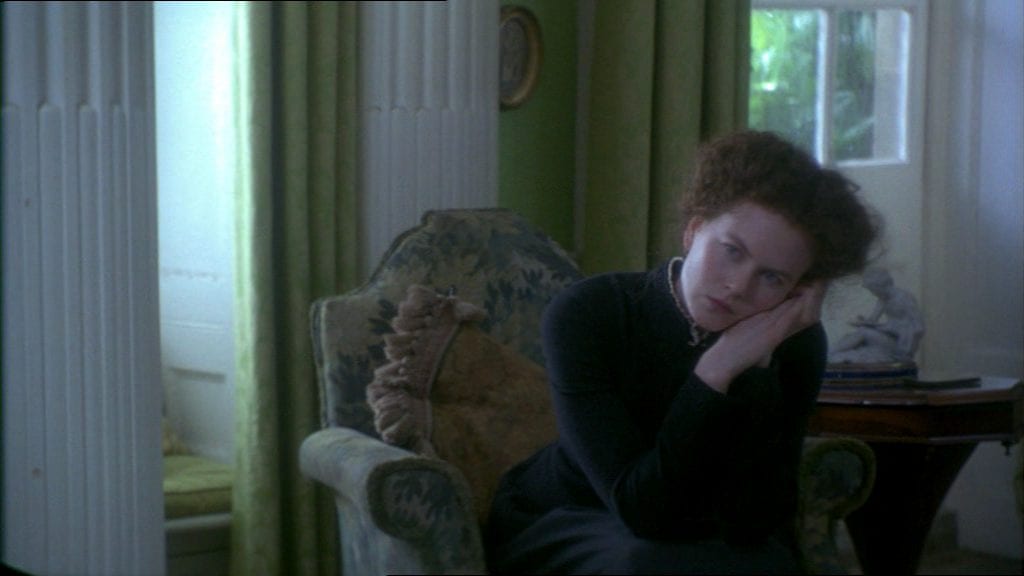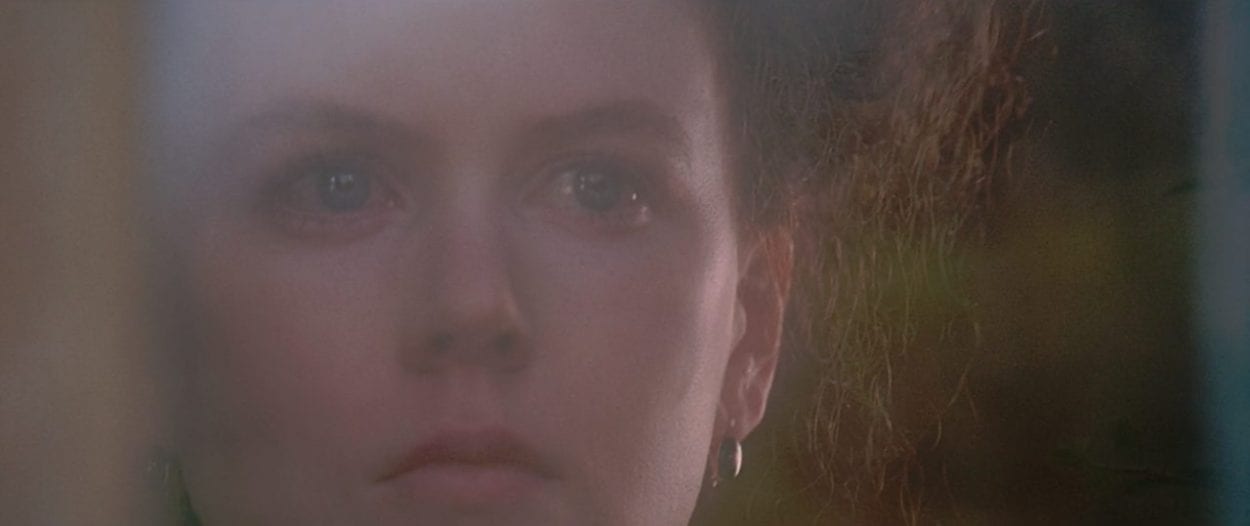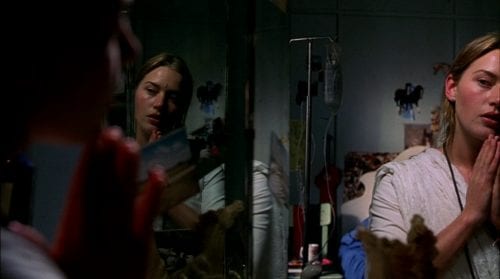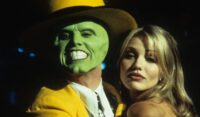Writer Virginia Woolf famously lobbied for a room of one’s own, and I find that Jane Campion’s films do the same on a grander scale, with her heroines demanding no less than the world and all its complexities.
For Ada in The Piano, it was her right to let her piano speak for her. Moving further into the 1990s, Campion focused on personal independence or lack thereof, with her adaptation of The Portrait of a Lady, with Nicole Kidman encompassing Henry James’ doomed and headstrong American heroine, Isabel Archer. Meditations on spiritual freedom and sex followed closely thereafter with the Holy Smoke, with Kate Winslet at the helm as Australian Ruth Barron.
Broadening Horizons
Travel plays a role in both heroines’ inner turmoil and emotional development. In Isabel’s case, she has an inheritance and an eclectic group of friends, family, and multiple suitors all vying for her affections. So she runs away to Europe. Unfortunately, the independence that served her well in the states is part of her shortcomings (and she is woefully out of her depth), and she is seduced by Gilbert Osmond (John Malkovich serving an ever calm and collected villain). A marriage is secured with the help of Madame Merle (the superb Barbara Hershey), who was once his lover (unbeknownst to Isabel). Isabel and Osmond share a life together, and as time passes, it becomes apparent that unlike her surname, Isabel missed the mark and will have to atone for her mistakes.
Ruth, on the other hand, is on holiday in India when she is touched by a religious leader, and her whole spiritual perspective changes. She commits to following the guru until her traveling companion reports back home to the Aussie suburbs and her family concocts a plan to make her leave India. They hire an expensive American deprogrammer PJ Waters (Harvey Keitel, in a slick and cocky performance) and lie about her father being sick to get her back in “safe” hands. It is early days in her religious discovery, which might have waxed and waned on its own accord. (Religious cults are an undercurrent of the film, although it never feels like Ruth was stepping forward blindly into her newfound faith.)
Unhappy Homecomings
Ruth’s return home sets the events of Holy Smoke into full motion, where Ruth finds herself stuck in a desert hut with PJ. He tries all his usual tricks to get her talking, but Ruth digs her feet in and while he’s trying to uncover her weak spot and take away her so-called spiritual props (he puts her sari up a tree), she finds his — women, and sex. Winslet is at her finest here, wholly unapologetic and spitting out terse dialogue worthy of an Oscar nomination.
In the end, she ends up offering her body to keep him from her soul. As the power struggle flips to where Ruth is now in control, she gives PJ a dose of his own medicine, pointing out how he tries to look younger to attract women (even though he’s married):
“Jeans pressed, cowboy boots… is that a uniform for individuals, is it? I want a young man.”
The verbal sparring continues until she finally breaks PJ and he’s delirious and chasing her in the outback and envisioning her as an Indian goddess and saying he’s in love with her. This, of course, is not the outcome Ruth wanted. She was looking for peace amongst the madness of her well-meaning but fractured family. It takes PJ writing “Be Kind” on her forehead after she dresses him up in one of her frocks to show him what a woman his age would look like. She has become cruel again, the very thing she had tried to move away from as she traveled through India.
Shifting back over to Portrait, it’s Osmond that’s dissecting Isabel’s every movement and utterance as she tries to (ironically) secure a good marriage for Osmond’s daughter Pansy. With her inheritance now in his pockets, he scrutinizes and gaslights her until she is somber and sobbing, her reflection fractured as she tries to collect herself. It is only when she hears that her ill cousin Ralph Touchett (Martin Donovan) is near the end that she manages the journey home, only to discover that it was he that had arranged for her to get the inheritance in the first place. Lying by his side, Isabel laments the time that slipped away, only for him to remind her that it wasn’t for nothing:
“That if you’ve been hated you’ve also been loved. Ah but, Isabel — ADORED!”
Kidman is often underrated as an actress, and Portrait showcased her in a compelling new light that audiences hadn’t seen her in at the time. (Thankfully, Eyes Wide Shut and Moulin Rouge would follow shortly after that.) When the film opens, we seem to have caught her in mid-thought, her wiry dark hair framing her pale, bare face. We quickly find out she’s sending a suitor on his way though she tries to let him down gently, as she tells him of the property he offers along with his hand: “I adore a moat.” It’s a small moment, awkward and funny for the honest tone paired with Isabel’s unpolished appearance. During her chaotic marriage to Osmond, Isabel is done up in corseted and bustled brocades, her hair a braided rope turned into a crown atop her head. She has, in fact, become imprisoned by the same riches that once gave her independence. When she returns home, the wiry hair returns, all the rouge wiped clean off her face. She is as she once was.

Pale Portraits and Heady Smoke
While the themes align, the color schemes are very different, with Portrait deferring to darker colors and natural light. This casts off the gloss often associated with costume films and makes it feel more relatable, which was Campion’s point with the somewhat jarring opening featuring modern-day women laughing in cool black and white tones. Any of us could be Isabel, give or take a corset.
On the other hand, Holy Smoke is jewel-toned and deeply saturated, occasionally delving into psychedelic religious visuals. This clues us in early to Ruth’s transformation into literal goddess towards the film’s close, where shortly after her and PJ are rescued from the desert and a blood-red sunset spills over the frame as Annie Lennox’s “Primitive” plays us out of the frame. Winslet is earthy, with bronzed skin and sun-kissed hair. And to continue the every girl theme, when she arrives back in Australia, she’s driving a beaten-up car at full speed, wailing Alanis Morrisette’s “You Oughta Know.” (Kate Winslet has been personal aesthetic goals for me since circa 1997, and this just poured gasoline on that fire.)

Codas Instead of Happy Endings
At the closure of both films, the heroines are oddly right back where they started. Ruth finds herself back in India, this time with her mother in tow, and she’s still in touch with PJ via email. She seems calmer and more centered, but she’s still searching for what she wanted in the first place, and she realizes their time in the desert changed them both.
Isabel went to Rome to escape Caspar Goodwood’s (Viggo Mortensen) insistent proposals. After Ralph is laid to rest, Caspar swoops in to capture what was lost, but again, Isabel leaves him wanting. At the start of Portrait, Isabel could never come to a decision, which is what made her marriage to Osmond so jarring. The film ends with her running back to the house and pausing at the door, her hand on the latch, frozen forever in mid-thought, echoing a moment from earlier in the film:
“I’m rather ashamed of my plans. I make a new one every day.”
These meditations on the feminine condition still feel fresh, with the struggles for power, happiness, and agency evergreen goals. What matters most is Campion showing how her heroines stumble towards greater knowledge or even enlightenment, making messes of their lives that they will come to address one day. For now, their new plans are just out of reach, and suitors or worshipers need not apply.




